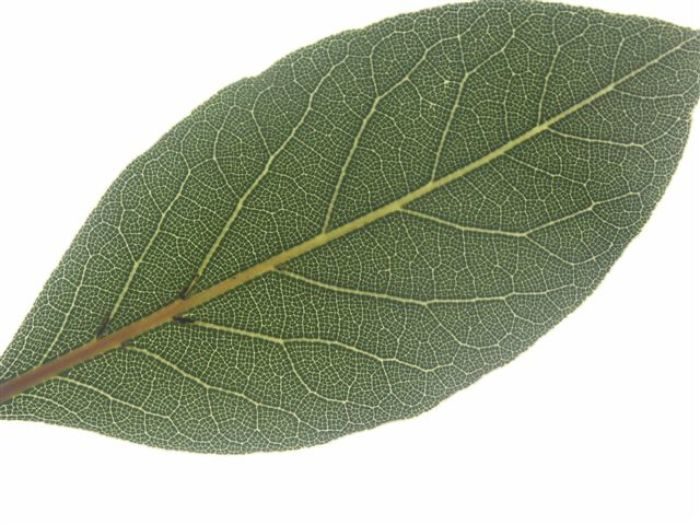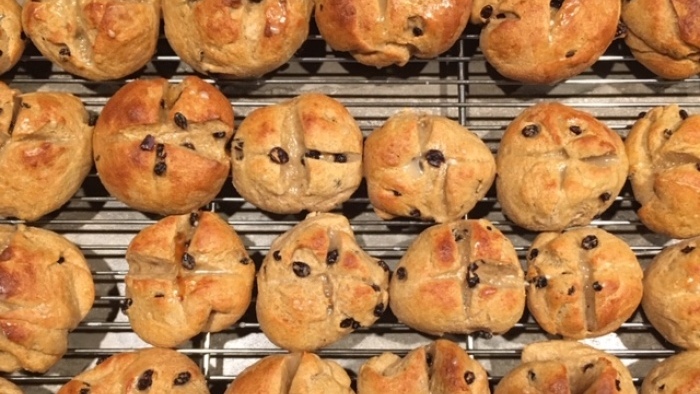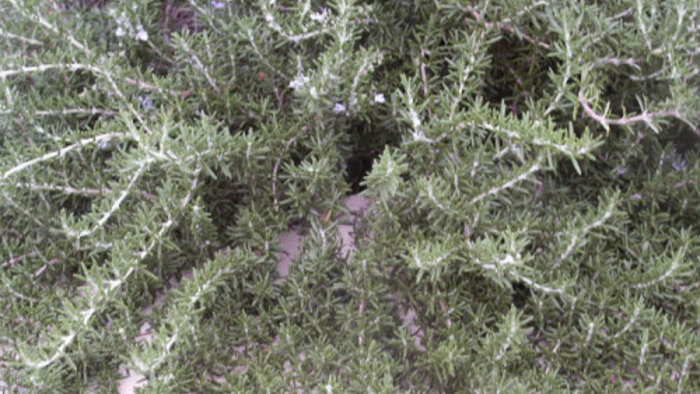
Hello gardeners!
This year, bay is Herb of the Year and it’s being celebrated internationally. The following article appears in Bay, Herb of the Year 2009, published by the International Herb Association, (compiled and edited by Susan Belsinger, 2008). If you want to get a copy, go online to https://www.iherb.org. For more recipes, check out by article ‘Bay: An Herb That Can Rest Upon Its Laurels’ in the Herb Companion. I am on the road right now doing garden and cooking programs and will check in next week!
Happy Herbing,
Susan
Bay (Laurus nobilis)
From Legend and Lore to Fragrance and Flavor
A crown of bay good fortune brings
to poets, cooks, scholars, kings.
–Carolyn Dille & Susan Belsinger
The classical legend of bay’s origin was Daphne’s transformation into the laurel tree during her pursuit by Apollo. Versions vary; one infers that the nymph Daphne was a fiercely independent, rather wild creature and rather than give herself to Apollo, she pleaded with her father, the river god Ladonas, to transform her. Another account indicates that Apollo was wounded by an arrow of Eros (cupid) and fell madly in love with Daphne, who fled from his advances and was changed into the slender bay laurel moments before her capture. All agree that Apollo was so astounded by the tree’s beauty that he claimed the laurel as his own and dedicated it to reward the highest achievements of Greek civilization. Bay was first an herb of poets, but also of oracles, warriors, statesmen, and doctors. The leaves were made into wreaths for illustrious poets and the ancients used them to crown heroes.
Bay laurel was the symbol of wisdom, both acquired and intuitive. Laurus nobilis is believed to derive from the Celtic word laur meaning green and the Latin nobilis signifying noble. Baccalaureate is from the Latin for laurel berries, which were given to Greek students of the classical period. As bay is a narcotic and stimulant in large amounts, it was an important part of the Delphic rites. Apollo’s priestesses chewed bay before prophesying. Later, even placing bay leaves beneath pillows was thought to bring prescient dreams.
Since bay was so strongly associated with the gods and people of high esteem, it gained the reputation of protecting against all manner of natural and manmade disasters. Sorcerers and poisoners could not harm the person who carried bay. It was believed that lightning would not strike where bay was planted. The Caesars appropriated bay as their special protector against accidents and conspiracies. Though not notably successful, its efficacy in this field was maintained even in sixteenth- and seventeenth-century England. Witches and devils were supposedly rendered helpless by it.
The medicinal uses of the herb were always important; it was used as often as garlic to protect against epidemics. Considered an anti-rheumatic, it was drunk as a tea and used in baths. The Romans used bay leaves and berries for the treatment of liver disorders. Culpeper said that bay berries were “effectual against the poisons of all venomous creatures and the sting of wasps and bees.” Oil from the berries was rubbed on sprains and used as eardrops.
The culinary history of bay has been constant and it is still an essential herb in the cuisines surrounding the Mediterranean. Strangely, though bay is likely of Mid-Eastern origin, there is no mention of it in records of Chinese cuisine. In those periods when people appreciated more and stronger herbal flavors, bay was commonly ground fine and sprinkled over fresh vegetables and cooked or marinated in fruit compotes.
Now it is cooked with every variety of meat and most kinds of fish and shellfish. Bay leaves are in the stuffings of or simply alongside many roasted fowl dishes. Its sweet balsamic aroma wafts from freshly baked breads, puddings and custards. It is essential to bouquet garnis for soups and stews, sauces and ragouts. I agree with Tom Stobart author of Herbs, Spices and Flavorings that “No kitchen should exist without bay leaves, and they should be used as a matter of habit,” and believe that bay adds depth and warmth to most kinds of sweets and savories.
The major contribution of bay to foods is its fragrance, sweet but not cloying, pervasive but not overpowering. If you are fortunate enough to have walked through a forest with many bay trees, you will understand the almost incredible refreshing power of bay’s scent. Its blend of balsam and honey, with hints of spice as in nutmeg and clove are predominant in the first inhale. These scents are followed by just a suggestion of citrus of orange and/or lemon sometimes followed by faint flowery tones described as vanilla or rose, and occasionally a hint of mint. I find the fragrance heady; these subtle combinations and other more ethereal echoes must be an ideal of master perfumers. The peak of bay’s aroma is between three days and a week after it has been picked; this brief drying time concentrates the oils just enough. I keep freshly harvested bay leaves in a loosely-rolled unsealed zip-close bag, on the door of my refrigerator; they stay green for months this way and are far superior to dried leaves.
Although the taste is complex and aromatic, sometimes bay can be sharp, slightly peppery, or even a bit bitter. Most cooks use the whole leaves and remove them before serving, though traditionally the guest who had the leaf in his portion was due to receive some minor or major fortune. Crumbled or crushed bay leaves have very sharp edges; they should be enclosed in a bouquet garni bag, or something similar, so that unsuspecting eaters do not come across them. In general, the leaves should be added when the cooking begins.
Aside from cooking with the leaves, for centuries bay leaves have been placed in foods from flour and meal, bean and grains to dried fruits, especially figs and raisins to deter insects and meal moths. In both Greece and Italy, bay leaves are commonly packed in with dried fruit, especially dried figs; I believe it is for flavor but also they help prevent meal worms and moths. Commercially dried bay should be bought carefully from a spice merchant as leaves can be old and fairly tasteless. Growing your own bay and using it fresh or drying it yourself is the way to go.
Picking bay in the wild is not recommended, as some commonly called bays or laurels are highly poisonous. California bay, Umbellularia californica, which I have picked when living in California, has an aroma much like Laurus nobilis but the taste is much more concentrated and bitter and should be used sparingly in cooking, if at all. Mountain laurel (Kalmia latifolia), cherry laurel (Prunus laurocerasus) and West Indian bay (Pimento racemosa) are highly toxic and should not be ingested.
Fine Gardening Recommended Products

Chapin International 10509 Upside-Down Trigger Sprayer
Fine Gardening receives a commission for items purchased through links on this site, including Amazon Associates and other affiliate advertising programs.

A.M. Leonard Deluxe Soil Knife & Leather Sheath Combo
Fine Gardening receives a commission for items purchased through links on this site, including Amazon Associates and other affiliate advertising programs.

Lee Valley Mini Garden Shear Set
Fine Gardening receives a commission for items purchased through links on this site, including Amazon Associates and other affiliate advertising programs.



















Comments
Log in or create an account to post a comment.
Sign up Log in